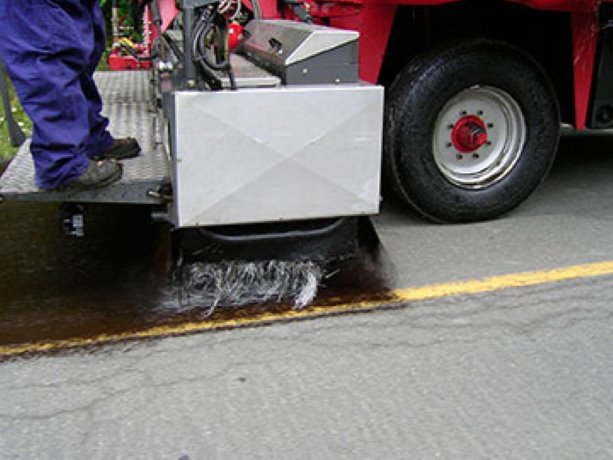The Ontario Ministry of Transportation (MTO) has approved options to bid asphalt cracking repairs using either a fibre Stress Absorbing Membrane Interlayer (SAMI) or a geotextile mat SAMI treatment process but says it is still investigating where it works best.
One of the biggest challenges the MTO faces in terms of road maintenance is reflective cracking which most often happens over the joints of the underlying concrete slabs or where there cracks in cement bound base layers.
Other causes include expansion, contraction and bending from temperature shift, traffic or where roads have been widened and there are different settlements of the substrate.
There are a couple of different ways of heading off the issue during construction and repair, including laying down asphalt reinforcement grids to add tensile stiffness, keep cracks to a minimum and prevent water seepage to lower levels where freeze-thaw damage can be much more substantial.
The most common crack treatment has been rout and seal but application of a micro-surface is a better though still short-term solution because after a few seasons the cracks propagate through the surface again, defeating the overlay.
The MTO has also been testing the use of chopped fibreglass strands, five to 10 cm in length, as a SAMI application in combination with polymer-modified asphalt emulsion sprayed onto the pavement surface, similar to conventional chip seal coating.
After spraying fibre membrane, stone chip aggregate is laid before a final pavement overlay to allow construction vehicles to safety use it.
The SAMI acts as a waterproof membrane and helps delay reflective cracking and propagation by absorbing some of the pavement strain from vehicle loads.
This technique is common to many jurisdictions and has been in use in Europe for 30 years. While other Canadian and North American jurisdictions have used it, the MTO trialed its first test of it with positive results on a 12.75 km section of Highway 62, near Madoc north of Belleville in 2009.
That sprayed-fibre application was with a specially designed trailer which laid material down in a four-metre-wide ribbon in 300 mm increments in which fiberglass strands were pneumatically inserted into the binder emulsion to ensure full immersion and random layering. It required about 10 per cent more binder for the polymer-modified cationic rapid setting emulsion applied at rates varying between 1.6 and 2.0 lt/m2 depending on the size of the aggregate. As a general rule, 10-per-cent more binder is applied to ensure proper encapsulation of the fibre.
Since then, the Highway 62 section is performing well, the MTO reports, with only minimal reflective cracks which is a positive because the pavement was highly distressed. Other test sections have been built on Highway 41, south of Denbigh, and on Highway 17, east of Sturgeon Falls.
Like other asphalt emulsion applications, FiberMat should not be applied in cold damp conditions, said Todd Filson, a pavement design and evaluation officer at MTO’s geotechnical engineering office, noting like chip seal technology there are strict specifications around ambient temperatures and timelines.
While challenges remain, there are many positives, including cost.
“At a cost of $4.50 — $5.50 a square metre, without the jneed for additional shoulder material and other construction needs, the savings can be found in the initial application as well as extending the service life of the road,” Filson said. “If proven successful over time, SAMI will be deemed a value-added tool in the ministry’s preservation management tool box and could be applied in other areas across the province.”
And, so far, it seems to be hitting all the right scores, he said. Though, on high speed roads, special care aggregate selection, embedment and sweeping, to reduce the possibility of windshield damage from loose stone, must be taken.
“We don’t currently have any experience with SAMI on higher volume — freeway conditions though a trial on Highway 401 west of Kingston is planned for summer 2013,” he said.

1/2
using either a fibre Stress Absorbing Membrane Interlayer



Recent Comments
comments for this post are closed